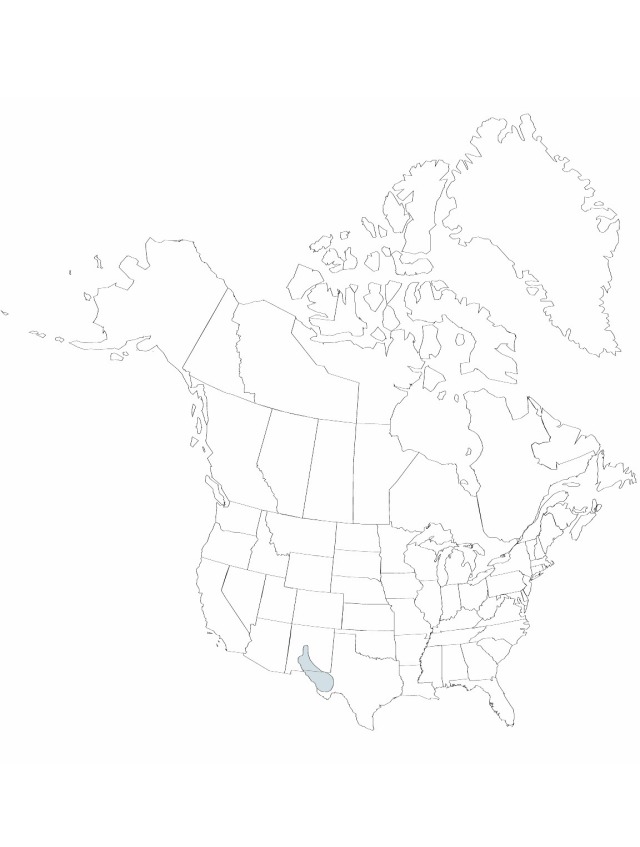Tradescantia wrightii
Trans. Acad. Sci. St. Louis 14: 188. 1904.
Herbs, erect or ascending, rarely rooting at nodes. Stems unbranched, 5–18 cm. Leaves: blade linear-lanceolate, 4–10 × 0.2–0.5 cm (distal leaf blades equal to or narrower than sheaths when sheaths opened, flattened), firmly membranaceous to subsucculent, glaucous or glaucescent, glabrous. Inflorescences terminal, solitary; bracts foliaceous. Flowers distinctly pedicillate; pedicels 1.2–1.7 cm, with few to many minute glandular hairs (or glabrous); sepals glaucous or glaucescent, 0.5–0.6 cm, glabrous or with a few minute glandular hairs at base; petals distinct, rose to magenta or purple, broadly ovate, not clawed, 1 cm; stamens free; filaments bearded. Capsules 3–4 mm. Seeds 2–3 mm. n = 6.
Phenology: Flowering spring–fall (May–Sep).
Habitat: Moist canyon stream banks
Distribution

N.Mex., Tex., Mexico (Chihuahua, Coahuila).
Discussion
Tradescantia wrightii var. glandulopubescens was described for Mexican plants with glandular-pubescent pedicels and sepals (B. L. Turner 1983), and this variety was listed for Texas (B. L. Turner 1993; S. L. Hatch et al. 1990). All U.S. collections that I have examined, however, including the holotype of T. wrightii, have at least some glandular hairs on these parts. Marshall Johnson believes that this is a valid variety, and I may not have examined typical specimens, but the diagnosis is not differential from the typical variety.
Tradescantia wrightii and T. pinetorum belong to section Tradescantia ser. Tuberosae D. R. Hunt and differ from the species of ser. Virginianae D. R. Hunt (species 1–19) by being geophytes (instead of hemicryptophytes) and in having the hilum much shorter than the seed (instead of ± equal to the seed). Tradescantia wrightii differs from T. pinetorum by its lack of root tubers, its glabrous leaves and internodes, and the absence of lateral inflorescences. The glandular hairs on the pedicels and sepal bases, much shorter than those of T. pinetorum, are easily overlooked.
Selected References
None.